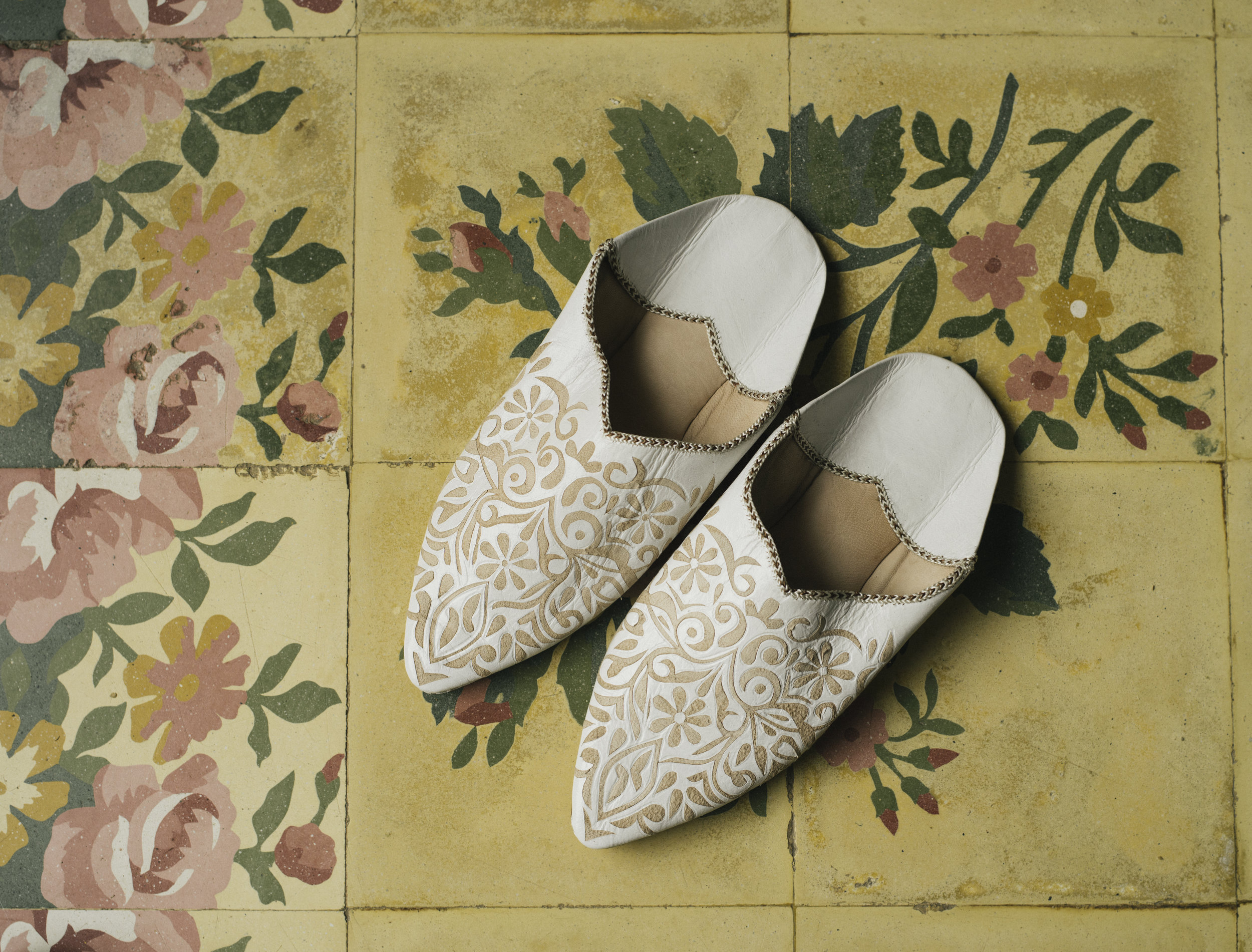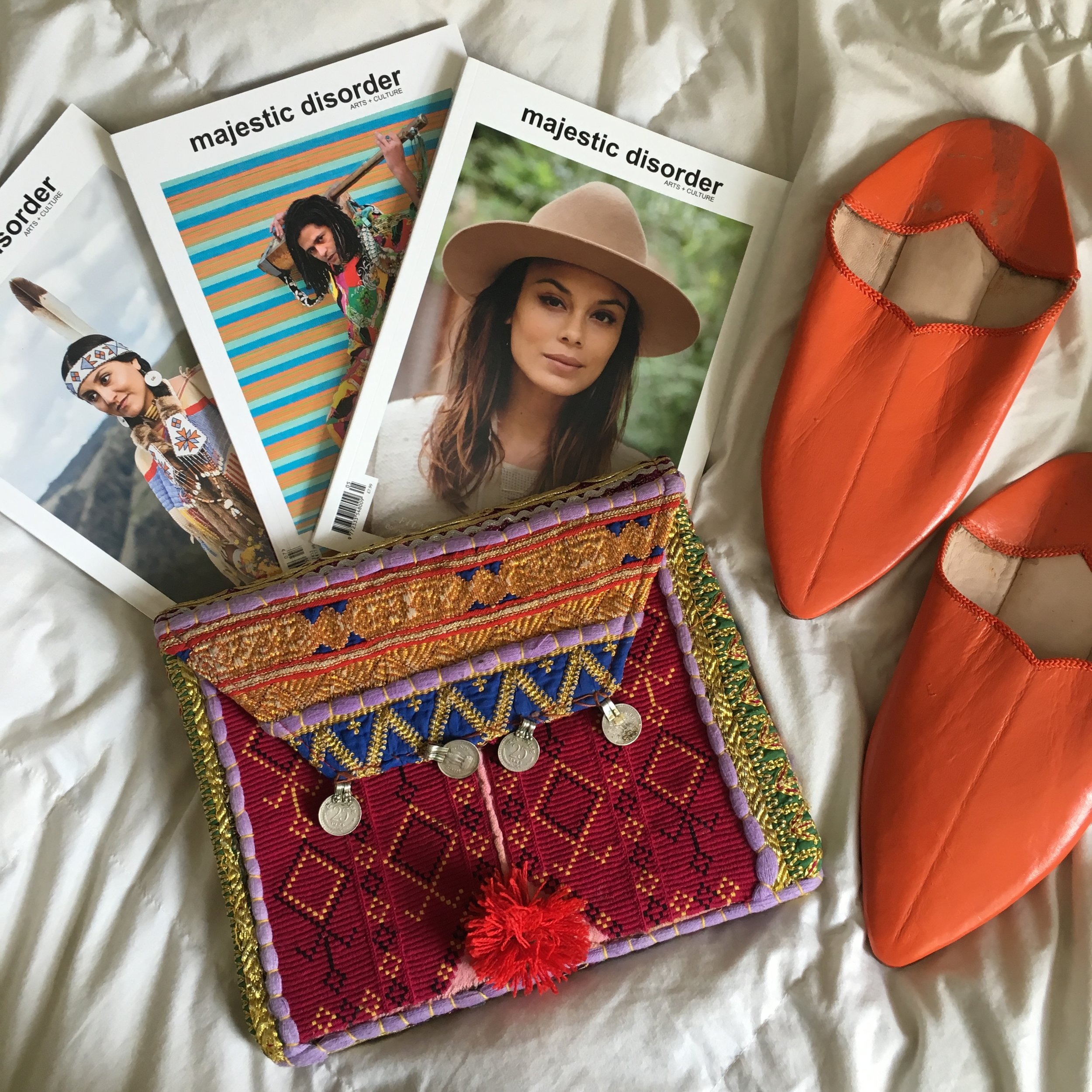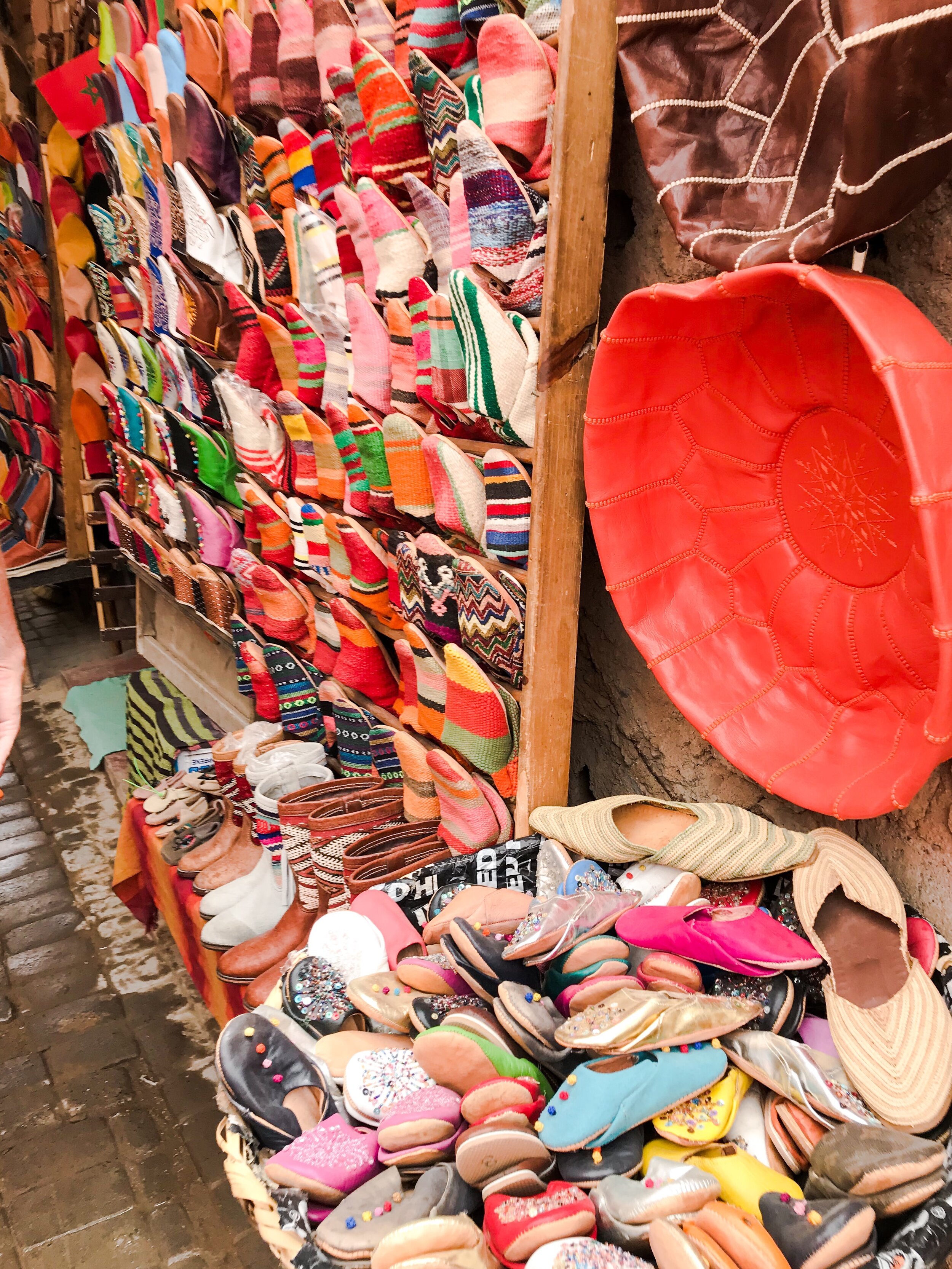Moroccan Slippers
From ancient sandstone walls to vibrantly pigmented embroidery and leatherwork, Morocco flows with color and zest.
Among its many exceptional crafts from centuries of blending African, Arabic and European influences, Morocco’s slipper or “babouche” is one people are most connected to.
Originating from the Arabic word “babush” and the Persian word “papush,” the name itself is symbolic of Morocco’s melting pot culture. The slipper is a heelless, open back, flat shoe made of pliable leather, typically raw hides of goats, cows, camels or sheep.
Artisans assemble these slippers by hand through a rigorous process of cleaning, drying, and dying. The organic tanning methods and color dying with plant-based materials is a patient and sustainable process refined from centuries of expertise.
This craftsmanship is common in the tanneries amongst cities like Marrakech or Fez. Inside Marrakech’s maze of a Medina, you’ll find its tanneries in Souk Smata, whose scent is unmistakable, which is why it’s located on the edge.
The end result produces a natural material with a distinctive scent no longer found in factory-cured leathers. The rounded toe slippers are native Berber-style and pointed toe slippers are traditional Arabic-style. Once stitched together they are either sold in their simple solid colored leather form or embellished with embroidery, sequins, tassels or bejeweled to create a more elaborate shoe.
Babouches were traditionally worn by the Bedouins, who were a nomadic Arab people that traveled through North Africa and found the exaggerated pointed toe fashionable, and turned the traditional Moroccan dress piece into a luxurious fashion statement. However, not all Moroccans took well to foreign adoration and influence on babouches, specifically Moulay Ismail ibn Sharif, who ruled Morocco from 1672 to 1727. After re-capturing the northern harbor town of Larache from Spain, Moulay asserted control by banning all black babouches, claiming they were an abomination introduced by Christian Spaniards. He decreed only Jewish people can wear all black babouches, as was their custom, and that Muslims must wear canary yellow babouches.
Jewish artisans were also creative with their babouche-making where they made a distinction with the presence of a small heel and slightly thicker sole. Some artisans were also specialists, trained in Marrakech with intrinsic techniques enabling subtle delicacy and decoration. These seemingly anonymous pieces can sometimes be attributed to a Jewish artisan when a small bird slips into the embroidery among foliage, flowers and stars.
While Moulay may not have appreciated foreign influences, that has not stopped designers around the world from creating their take on the traditional slipper. In 2016, Vogue deemed the Moroccan babouche the new “it” shoe when designer Phoebe Philo released her version of it in the 2016 Celine Resort collection. Soon babouches were seen all over from the runway to fast-fashion factories.
These trending copies all lack the authenticity and traditional values that only Moroccan artisan craftsmanship can produce. While global designers may have made babouches more accessible, Moroccan artisans have practiced and passed down these talents for centuries. It’s important to the artisan community and Moroccan culture that these traditions be kept alive and not traded for mass produced, machine-made products.





